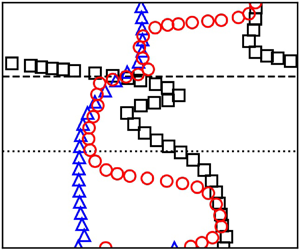Article contents
Growth mechanisms of second-mode instability in hypersonic boundary layers
Published online by Cambridge University Press: 15 December 2020
Abstract

Stability analyses based on the rates of change of perturbations were performed to study the growth mechanisms of second-mode instability in hypersonic boundary layers. The results show that the streamwise velocity perturbation is strengthened by the concurrence of the momentum transfer due to the wall-normal velocity fluctuation and the streamwise gradient of the pressure perturbation near the wall, while the wall-normal velocity perturbation is dominated by the wall-normal gradient of the pressure perturbation. Meanwhile, the change of fluctuating internal energy is sustained by the advection of perturbed thermal energy in the vicinity of the critical layer and by the dilatation fluctuation near the wall. The energy transport by the wall-normal velocity fluctuation accounts for the growth of second-mode instability, and the growth rate depends on the relative phase of the energy transport by the wall-normal velocity fluctuation to the total time rate of change of fluctuating internal energy in the vicinity of the critical layer. Moreover, this relative phase is associated with the mutual interaction between the critical-layer fluctuation and the near-wall fluctuation. Porous walls recast this mutual interaction by delaying the phase of the wall-normal energy transport near the wall, resulting in the stabilization of the second mode.
- Type
- JFM Rapids
- Information
- Copyright
- © The Author(s), 2020. Published by Cambridge University Press
References
REFERENCES
- 13
- Cited by



